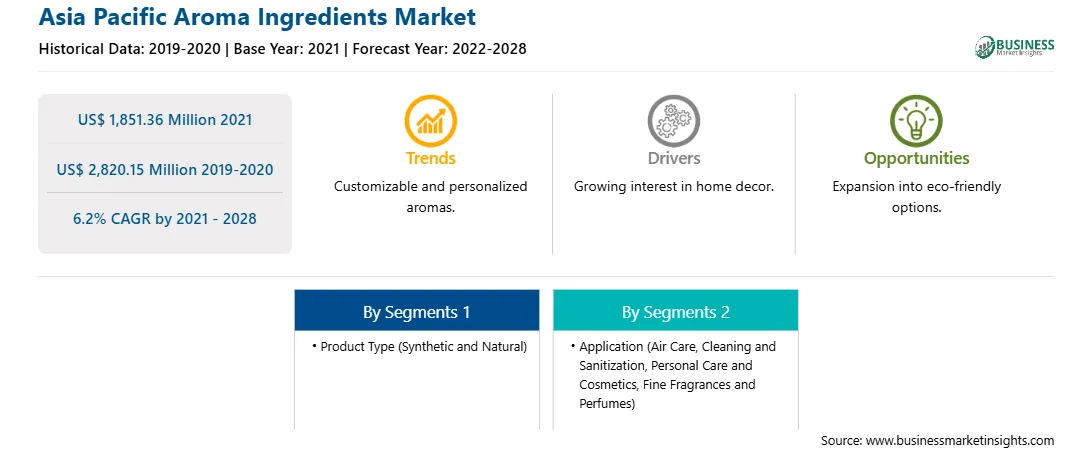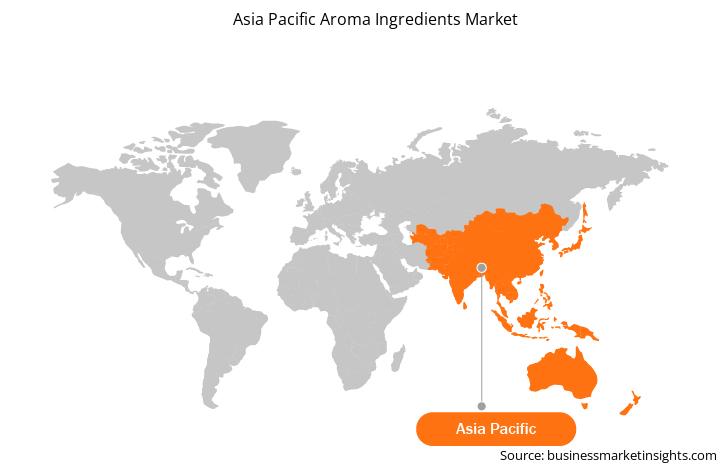Manufacturing companies are focusing on innovations for developing new products to provide an enhanced experience to customers. Moreover, intense competition in the acrylamide market is driving the focus toward using digital tools to create new fragrance ingredient combinations and customizations. For instance, BASF SE developed an innovative approach to the virtual innovation ecosystem, which combines its strength in chemistry with the understanding of flavor and fragrance houses and the company's partners in the flavors & fragrances (F&F) industry. This innovative ecosystem includes a digital screening of BASF's molecules to search for substances meeting new aroma ingredient requirements and partnering with the companies assessing and developing fresh aroma ingredients. Further, Givaudan fragrances launched Carto as part of its 2020 innovative digital strategy, the latest intuitive and interactive system that reinvents the way perfumes are created. This artificial-intelligent (AI) tool was designed to use the company's unique ingredients for maximizing the olfactive performance in the final formula. Symrise has developed a unique fragrance from Lilybelle (a renewable source), which is made by using the byproducts of the orange juice industry; ~83% of it is composed of renewable raw materials. Thus, such innovations in the aroma ingredient market are expected to lead to future trends in the aroma ingredients market.
With these new features and technologies, vendors can attract new customers and expand their footprints in emerging markets. This factor is likely to drive the Asia Pacific aroma ingredients market at a substantial CAGR during the forecast period.
The Asia Pacific aroma ingredients market is segmented on the basis of type, application, and country. Based on type, the market is segmented into synthetic and natural. In 2020, synthetic segment held the largest share in the market, natural is expected to be the fastest growing segment during the forecast period. Based on application, the market is segmented into air care, cleaning and sanitization, personal care and cosmetics, fine fragrances and perfumes, and others. In 2020, cleaning and sanitization segment held the largest share in the market, personal care and cosmetics is expected to be the fastest growing segment during the forecast period. Similarly, based on country the market is segmented into Australia, China, India, Japan, South Korea, and Rest of Asia Pacific. In 2020, China held the largest share in the market, and it is expected to be the fastest growing country during the forecast period.
Takasago International Corporation; BASF SE; FIRMENICH SA; Givaudan; International Flavors & Fragrances Inc.; Robertet Group; Symrise; MANE; Zhejiang NHU Co., Ltd.; and Phoenix Aromas & Essential Oils, LLC are among the leading companies in the Asia Pacific aroma ingredients market.
Strategic insights for the Asia Pacific Aroma Ingredients provides data-driven analysis of the industry landscape, including current trends, key players, and regional nuances. These insights offer actionable recommendations, enabling readers to differentiate themselves from competitors by identifying untapped segments or developing unique value propositions. Leveraging data analytics, these insights help industry players anticipate the market shifts, whether investors, manufacturers, or other stakeholders. A future-oriented perspective is essential, helping stakeholders anticipate market shifts and position themselves for long-term success in this dynamic region. Ultimately, effective strategic insights empower readers to make informed decisions that drive profitability and achieve their business objectives within the market.

| Report Attribute | Details |
|---|---|
| Market size in 2021 | US$ 1,851.36 Million |
| Market Size by 2028 | US$ 2,820.15 Million |
| Global CAGR (2021 - 2028) | 6.2% |
| Historical Data | 2019-2020 |
| Forecast period | 2022-2028 |
| Segments Covered |
By Product Type
|
| Regions and Countries Covered | Asia-Pacific
|
| Market leaders and key company profiles |
The geographic scope of the Asia Pacific Aroma Ingredients refers to the specific areas in which a business operates and competes. Understanding local distinctions, such as diverse consumer preferences (e.g., demand for specific plug types or battery backup durations), varying economic conditions, and regulatory environments, is crucial for tailoring strategies to specific markets. Businesses can expand their reach by identifying underserved areas or adapting their offerings to meet local demands. A clear market focus allows for more effective resource allocation, targeted marketing campaigns, and better positioning against local competitors, ultimately driving growth in those targeted areas.

The Asia Pacific Aroma Ingredients Market is valued at US$ 1,851.36 Million in 2021, it is projected to reach US$ 2,820.15 Million by 2028.
As per our report Asia Pacific Aroma Ingredients Market, the market size is valued at US$ 1,851.36 Million in 2021, projecting it to reach US$ 2,820.15 Million by 2028. This translates to a CAGR of approximately 6.2% during the forecast period.
The Asia Pacific Aroma Ingredients Market report typically cover these key segments-
The historic period, base year, and forecast period can vary slightly depending on the specific market research report. However, for the Asia Pacific Aroma Ingredients Market report:
The Asia Pacific Aroma Ingredients Market is populated by several key players, each contributing to its growth and innovation. Some of the major players include:
The Asia Pacific Aroma Ingredients Market report is valuable for diverse stakeholders, including:
Essentially, anyone involved in or considering involvement in the Asia Pacific Aroma Ingredients Market value chain can benefit from the information contained in a comprehensive market report.